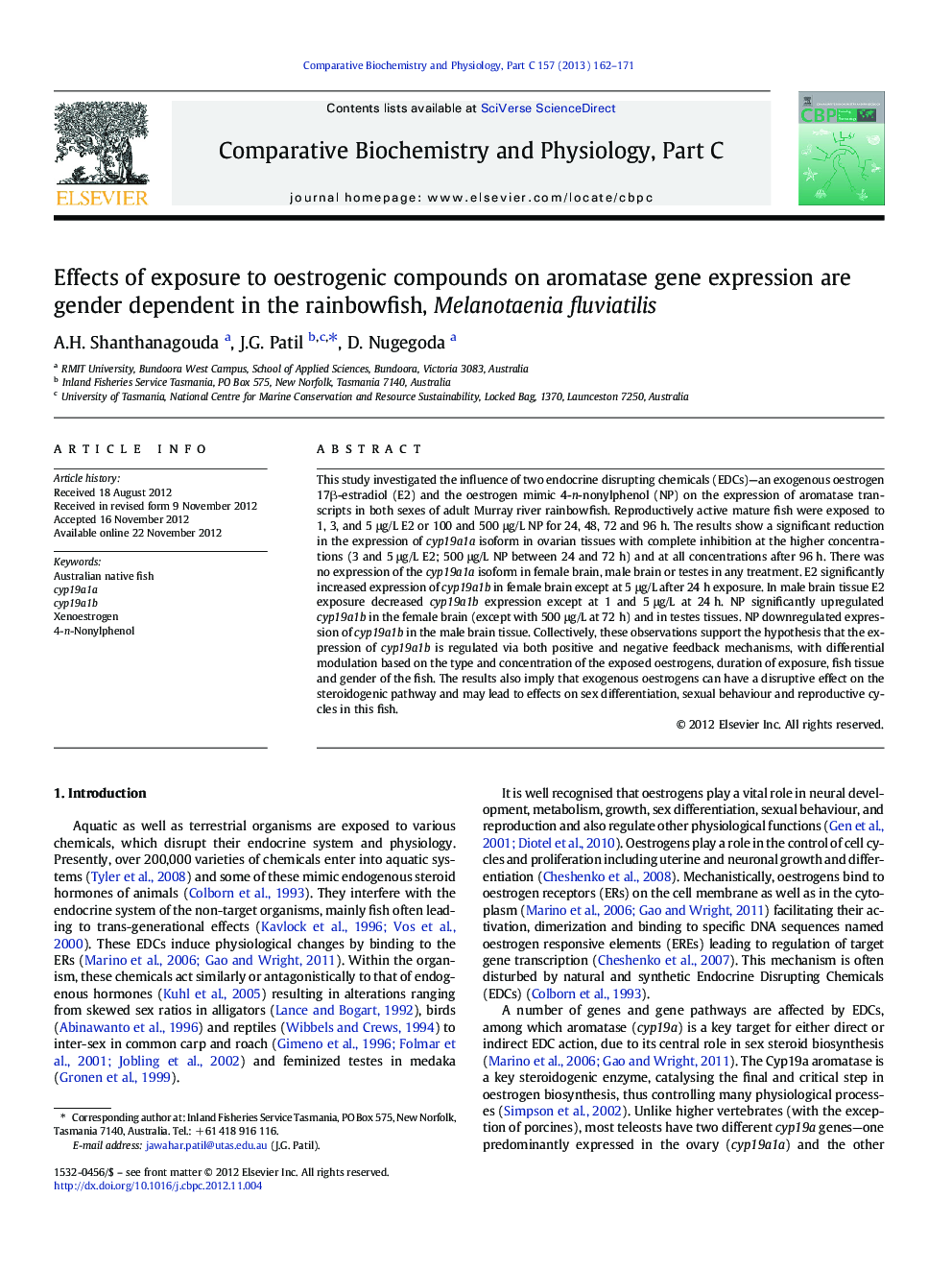| Article ID | Journal | Published Year | Pages | File Type |
|---|---|---|---|---|
| 1977492 | Comparative Biochemistry and Physiology Part C: Toxicology & Pharmacology | 2013 | 10 Pages |
This study investigated the influence of two endocrine disrupting chemicals (EDCs)—an exogenous oestrogen 17β-estradiol (E2) and the oestrogen mimic 4-n-nonylphenol (NP) on the expression of aromatase transcripts in both sexes of adult Murray river rainbowfish. Reproductively active mature fish were exposed to 1, 3, and 5 μg/L E2 or 100 and 500 μg/L NP for 24, 48, 72 and 96 h. The results show a significant reduction in the expression of cyp19a1a isoform in ovarian tissues with complete inhibition at the higher concentrations (3 and 5 μg/L E2; 500 μg/L NP between 24 and 72 h) and at all concentrations after 96 h. There was no expression of the cyp19a1a isoform in female brain, male brain or testes in any treatment. E2 significantly increased expression of cyp19a1b in female brain except at 5 μg/L after 24 h exposure. In male brain tissue E2 exposure decreased cyp19a1b expression except at 1 and 5 μg/L at 24 h. NP significantly upregulated cyp19a1b in the female brain (except with 500 μg/L at 72 h) and in testes tissues. NP downregulated expression of cyp19a1b in the male brain tissue. Collectively, these observations support the hypothesis that the expression of cyp19a1b is regulated via both positive and negative feedback mechanisms, with differential modulation based on the type and concentration of the exposed oestrogens, duration of exposure, fish tissue and gender of the fish. The results also imply that exogenous oestrogens can have a disruptive effect on the steroidogenic pathway and may lead to effects on sex differentiation, sexual behaviour and reproductive cycles in this fish.
